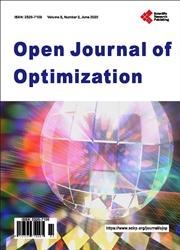Performance Improvement of Truck Assembly Line through Modeling and Simulation Using Arena Software
引用次数: 1
Abstract
Due to global completion in the automotive industry, productivity improvement is vital in these industries. In automotive assembly lines, productivity loses are attributed to bottlenecks, long processing time in workstations and underutilization of resources. The purpose of this research is to evaluate the performance of the production system, analyze the bottlenecks in different parts of the workstation, their capacity and constraints. Also, develop different scenarios for improvement. To achieve this objective, a simulation model was developed using Arena Software to analyze bottlenecks in each workstation. The analysis was based on the queue in the system to identify the longest queue in workstations. After analysis of the assembly line, the result showed that the longest waiting time observed is cab preparation and drop, bumper, engine subassembly fitment of soundproof with respective numbers 14.4, 13.97, 13.00, 13.70 minutes, with respective average number waiting of 24.87%, 17.57%, 25.91% and 23.39%. Using different scenarios for the improvement of the production line showed that the waiting time observed in-cab preparation and drop, bumper, engine subassembly, fitment of soundproof has greatly reduced for the two workstations added and three operators respectively from 14.4 to 3.97 and 3.1, from 13.97 to 3.77 and 2.48, from 13.00 to 4.21 and 3.83, from 13.70 to 0.00 and 2.37 minutes, with respective average number waiting from 24.87% to 5% and 2%, from 17.57% to 5% and 0.9%, from 25.91% to 5% and 4%, and from 23.39% to 0.00% and 3%. To conclude the research study was able to demonstrate the modelling approach using simulation for analysis of a production line assembly. The contribution of this research was so enormous, this study has improved the output production up to 144%.Arena软件建模与仿真提高卡车装配线性能
由于汽车行业在全球范围内的全面发展,提高这些行业的生产力至关重要。在汽车装配线上,生产力的损失归因于瓶颈、工作站处理时间长和资源利用不足。本研究的目的是评估生产系统的性能,分析工作站不同部分的瓶颈、它们的容量和约束条件。此外,制定不同的改进方案。为了实现这一目标,使用Arena软件开发了一个模拟模型来分析每个工作站中的瓶颈。该分析基于系统中的队列来识别工作站中最长的队列。通过对装配线的分析,结果表明,观察到的等待时间最长的是驾驶室准备和降下、保险杠、发动机组件隔音安装,分别为14.4、13.97、13.00、13.70分钟,平均等待次数分别为24.87%、17.57%,25.91%和23.39%。使用不同的场景对生产线进行改进表明,增加的两个工作站和三个操作员在驾驶室准备和降落、保险杠、发动机分总成、隔音安装方面观察到的等待时间分别从14.4到3.97和3.1,从13.97到3.77和2.48,从13.00到4.21和3.83,从13.70分钟到0.00分钟和2.37分钟,平均等待人数分别从24.87%到5%和2%,从17.57%到5%和0.9%,从25.91%到5%和4%,以及从23.39%到0.00%和3%。最后,该研究能够证明使用模拟分析生产线组件的建模方法。这项研究的贡献是如此巨大,这项研究将产量提高了144%。
本文章由计算机程序翻译,如有差异,请以英文原文为准。
求助全文
约1分钟内获得全文
求助全文

 求助内容:
求助内容: 应助结果提醒方式:
应助结果提醒方式:


